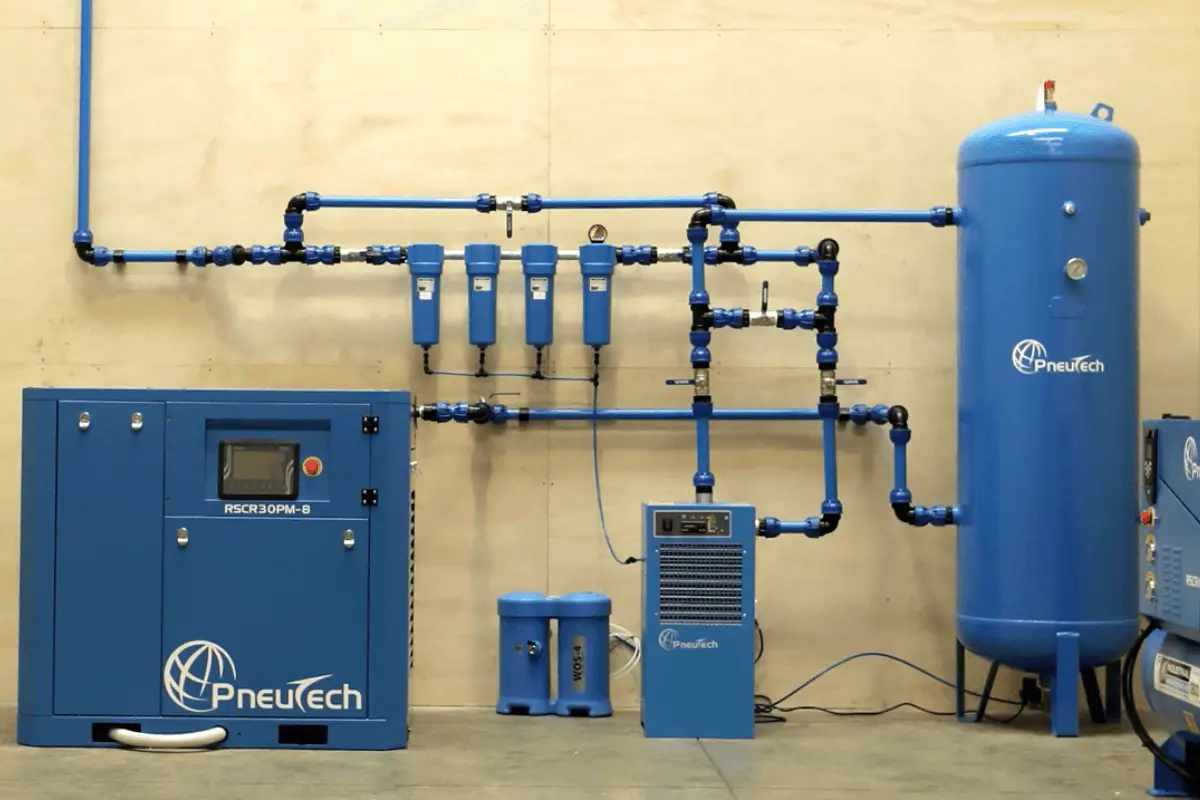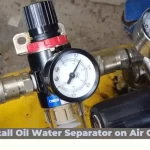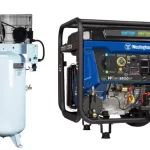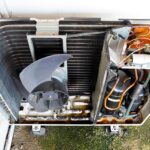You might wonder which material would make the best pipe for air compressor lines. And that is a very good question. Losing power as a result of faulty or inefficient piping is a costly accident.
I am here to help you to make your best choice of piping for your compressed air systems and save you money. Please see the advantages and disadvantages of some of the most popular materials for compressed air piping listed below.
Best pipe for air compressor lines – Overview
Materials for compressed air systems come in a wide variety. Performance, cost, reliability, and aesthetics must all be considered when choosing a piping material.
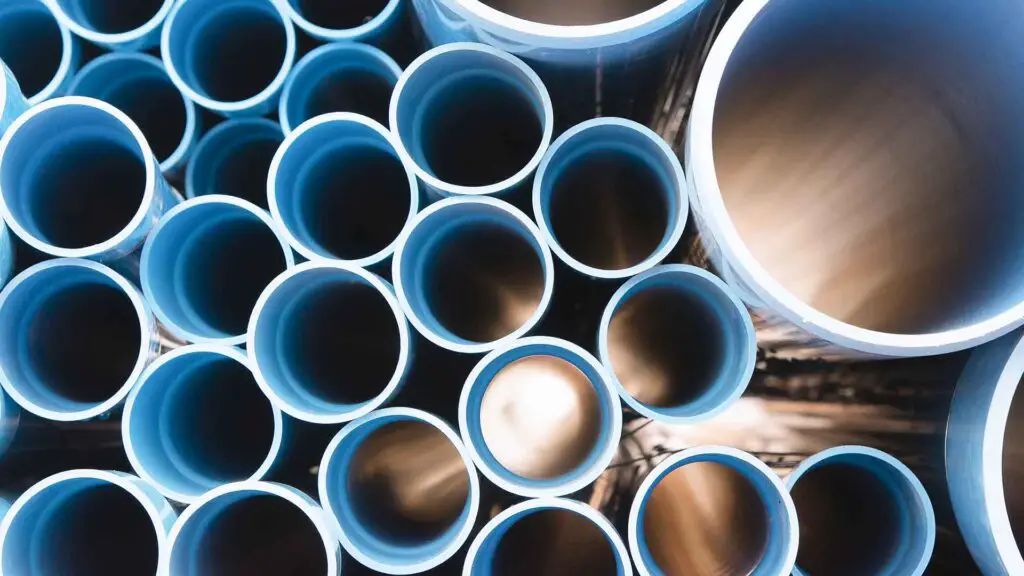
Aluminum pipes
I would like to start with aluminum piping material which is the best material for compressed air piping and is HIGHLY RECOMMENDED. Over the past 10 to 15 years, aluminum compressed air piping systems have become more and more popular, and for good reason. Aluminum piping is resistant to leaks and does not rust. Aluminum is lightweight, making it simple to handle and install, especially when using push-together connectors.
Aluminum modular compressed air piping systems don’t need a hot work permit because they may be installed without welding, brazing, or threading.
Because compressed air is so expensive to produce, adopting aluminum piping to reduce leaks in your system might be your best bet. It is a highly suggested pipe material for clean air applications.
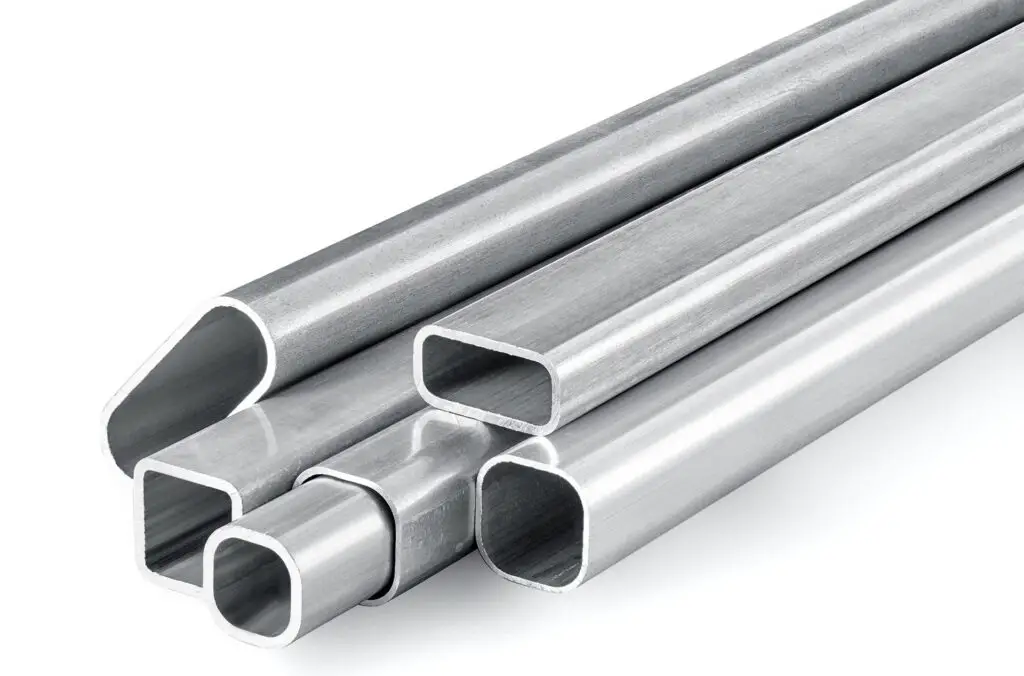
| Advantages | Disadvantages |
|---|---|
| Zero corrosion Great leak resistance Light weight Easy to install | Material cost Thermal expansion/contraction |
If you are looking for the best air compressor for spray painting, check a detailed review in the related article here.
Black pipes
The most popular and RECOMMENDED pipe type for compressed air systems is black pipe. Many older systems use black iron piping. Thus the majority of people are familiar with how to install it, and it is both robust and long-lasting. These pipes can be installed by any plumber using fittings that are easily obtained at the local hardware store because they are joined by threading and/or welding.
However, black iron pipe is not resistant to rust. Because the pipe is uncoated, moisture will cause rusting to begin, which will progress over time and harm pneumatic tooling. Black pipe systems demand a long time for installation. Due to the weight, anchoring is required for iron pipes.
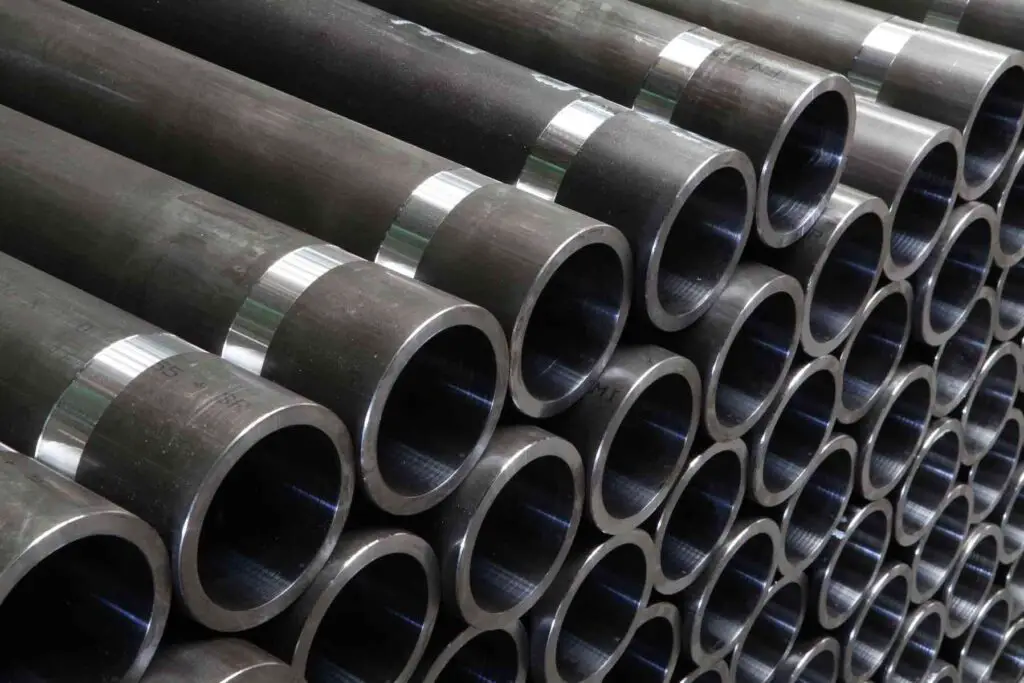
| Advantages | Disadvantages |
|---|---|
| Robust and long-lasting Familiar way of installation Fittings are easy to get | Extremely vulnerable to corrosion Heavyweight Leaks frequently appear around joints Specialized equipment and training are needed |
Stainless steel pipes
Stainless steel piping has been successfully used for a very long time to reduce corrosion, and its use is RECOMMENDED. Stainless steel is as strong and durable as black pipe but without rusting issues. This is the most long-lasting alternative to steel and iron pipe. And it looks fantastic. Similar to black pipe, installing the stainless steel piping and fittings can be reasonably easy and most people are familiar with the process.
However, the installation is a lengthy process and pipes might be difficult to fit due to their weight. Additionally, stainless steel pipe threads have the propensity to gall and freeze up, which can be extremely challenging for general maintenance and disassembly. It has the same weight and tendency to leak around joints and welds as conventional iron.
By the way, Victaulic fittings have been utilized successfully for this reason. They are mounted using a clamp and a rubber seal.
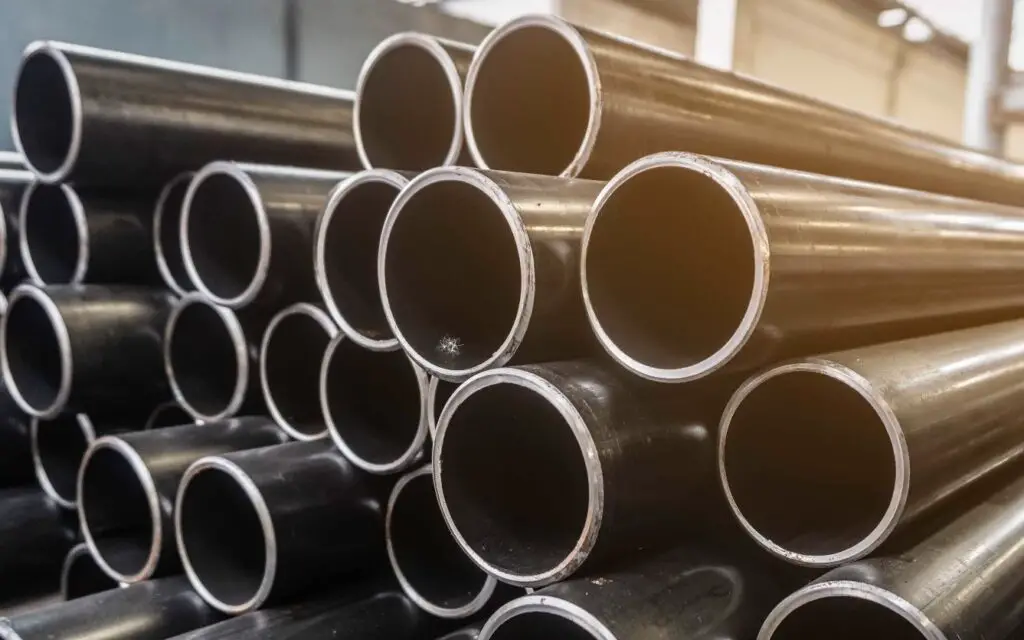
| Advantages | Disadvantages |
|---|---|
| Non-corrosive Strong Easy to install Durable | Material cost Heavyweight Specialized equipment and training are needed Maintenance is challenging Might leak around joints |
Looking for step-by-step guide on how to drain air compressor? Check this article here.
Copper pipes
Copper piping is frequently RECOMMENDED for pure air. It is lightweight, easy to cut and weld, highly effective, and doesn’t corrode which will keep your pneumatic tools safe. It is less complicated to install than stainless steel and lighter than iron. Copper pipe uses the same widely accessible fittings and accepted connecting methods as iron piping. Although copper pipe installation is aesthetically beautiful, soldering joints takes time and requires competence.
The expense of copper piping is its biggest disadvantage. Because of that copper’s use in compressed air system design has become less desirable and is often substituted by other materials by manufacturers.
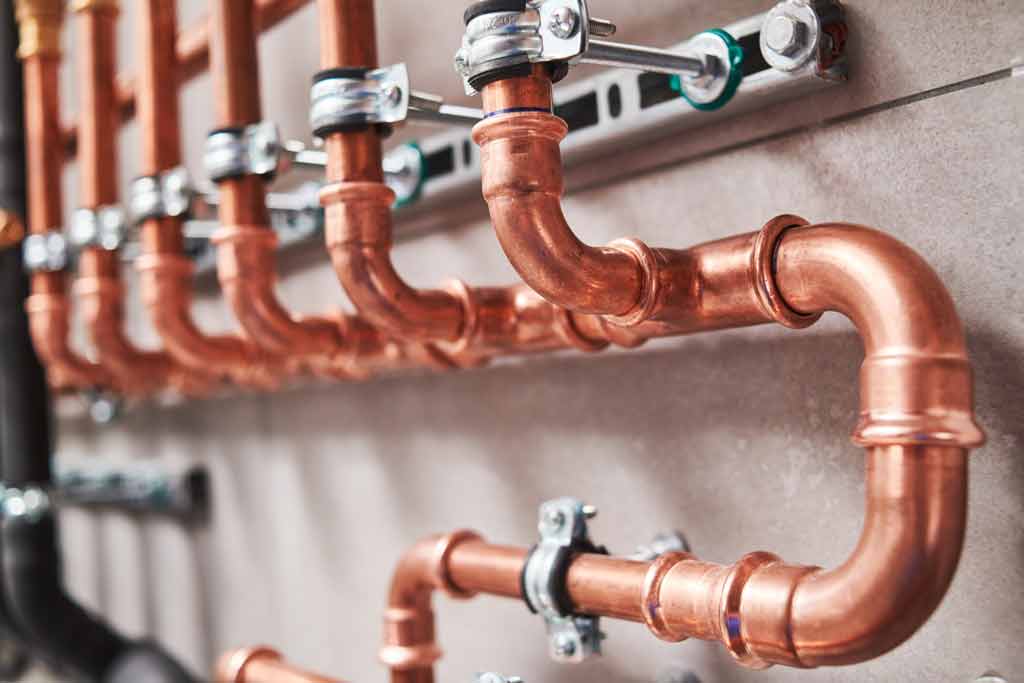
| Advantages | Disadvantages |
|---|---|
| Light weight Rust resistant Easy to cut and weld Easy to install | Material cost Require competence to install |
Galvanized pipes
For general plumbing and water distribution, galvanized piping is frequently utilized. However, using compressed air with it is NOT RECOMMENDED. Although galvanized coating resists moisture and minimize corrosion, the parts of the coating will flake off and end up in your tools. Cylinders, pneumatic tools, and other components will sustain significant damage as a result of the debris. More significantly, tiny flakes that come out of blow gun can seriously hurt people.
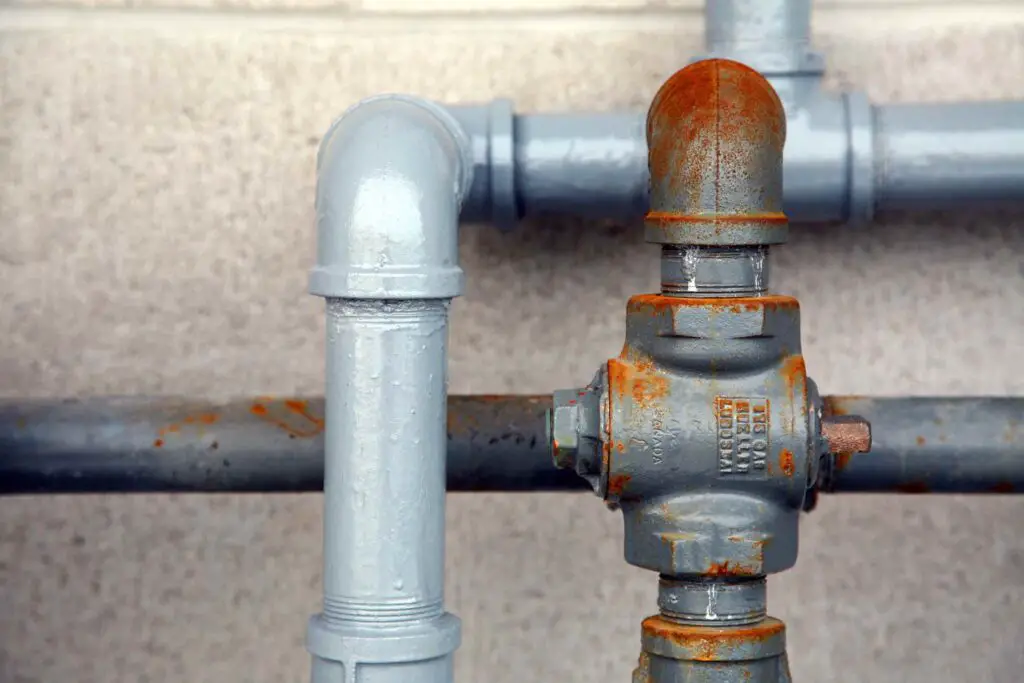
| Advantages | Disadvantages |
|---|---|
| Moisture resistant | Health and safety risks (galvanized coating flakes off inside the piping and will damage pneumatic tools or even hurt people) |
Plastic pipes
Compressed air piping made of plastic is low-cost, lightweight, easy to install, and non-corrosive. But not all plastics are created equal. The plastic piping you select must, above all else, be OSHA-approved for use in compressed air systems. OSHA stands for Occupational Safety and Health Administration.
PVC and CPVC Piping system
Although PVC and CPVC piping is frequently used due to its accessibility, affordability, and ease of installation, using it with compressed air is NOT RECOMMENDED. The main justification is that using PVC piping in the US for compressed air consumption is against OSHA regulations.
PVC and CPV piping system is not strong enough to survive high-pressure applications like compressed air distribution. PVC pipe can crack, break, or even shatter over time because, like many polymers, it becomes brittle. Additionally, PVC pipe deteriorates more quickly due to heat generated by compressed air and the presence of air compressor oils in the line. The airborne, razor-sharp shrapnel from these failures, when mixed with air under pressure, has the potential to be lethal.
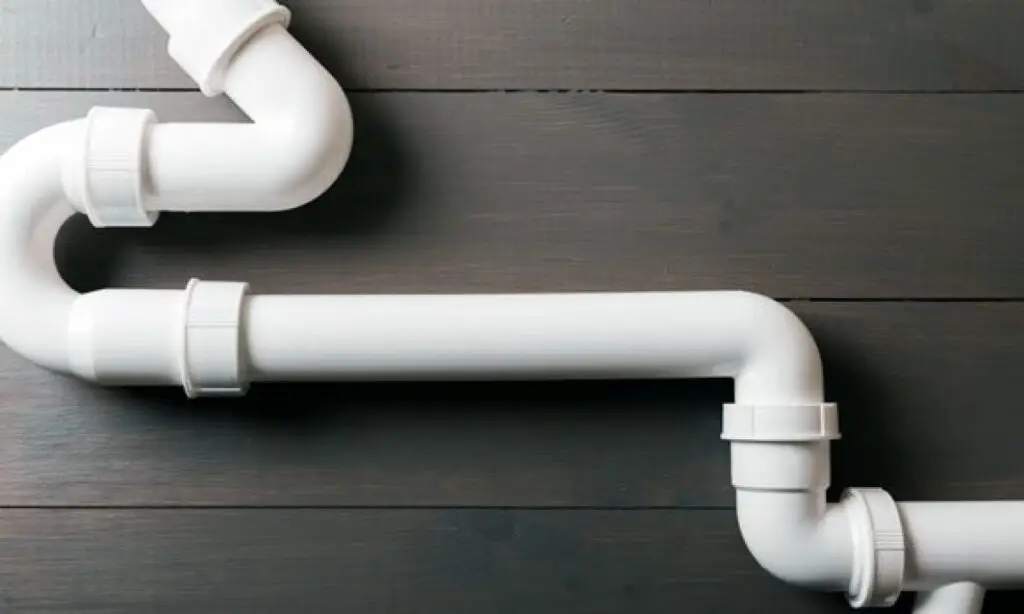
| Advantages | Disadvantages |
|---|---|
| Lightweight Easy to install Rust resistant | Easy to break Safety and health risks |
ABS, PE and HDPE for compressed air system
Acrylonitrile butadiene styrene (ABS), polyethylene (PE), and high-density polyethylene are a few further alternatives for plastic compressed air piping (HDPE) which are OSHA-tested and include authorized types of cement. Many of the advantages of PVC and CPVC are still present in these materials, but they are more robust and do not degrade when exposed to oils and lubricants.
ABS, PE, and HDPE plastics don’t need any particular bracing or supports because they are lightweight and simple to deal with. They are simple to shape using common equipment and can be joined with adhesive rather than welding.
What about hacking tips on how to add oil to air conditioning compressor? Here you can find step-by-step guide.
FAQs
What type of pipe is best for compressed air?
Aluminum comes highly recommended for compressed air lines as it is inexpensive for businesses to use, lightweight for simple handling, and resistant to corrosion and leakage. Since aluminum compressed air pipes don’t need to be threaded or soldered, they are also simpler to install and change than other pipe types.
Talking about plastic pipes for piping compressed air, acrylonitrile butadiene styrene (ABS) makes the best choice. High-density polyethylene (HDPE) and polyethylene (PE) pipework are additional excellent options for compressed air applications. NB! The use of PVC is not advised and is against OSHA regulations.
Is it OK to use PEX for air compressor lines?
No, PEX pipes are not intended for compressed air system.
Is it OK to use PVC for air compressor lines?
PVC pipes are common but NOT RECOMMENDED for compressed air systems. They are commonly used because they are low-cost, lightweight, and easy to install. However, like any plastic, PVC gets brittle over time and can easily crack, break and potentially be lethal. For this reason, PVC is against OSHA regulations.
What size of pipe should I use to connect my air compressor?
You need 8 or 16 cfm at 90 psi in half-inch pipes for shear. For application pressures of more than 15 cfms, you need a 3/4-inch tube when your pipes are longer than 200 meters.
Final Words
In conclusion, there are numerous options available for pipework in your compressed air system. Depending on the needs of your application, the expertise of your personnel, and the available time, Metal pipes are always the finest option. Choose among copper piping, stainless steel piping, and aluminum piping.
Use neither galvanized pipes nor PVC. Avoiding these options will save you time, money, and headaches. If at all possible, avoid black pipes as well.
